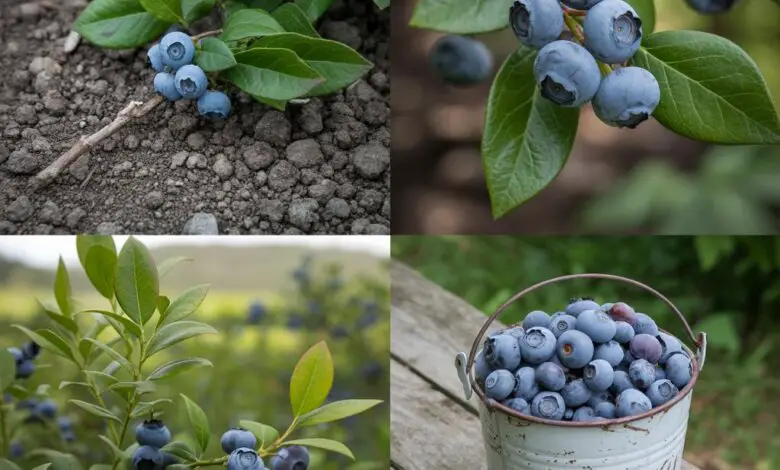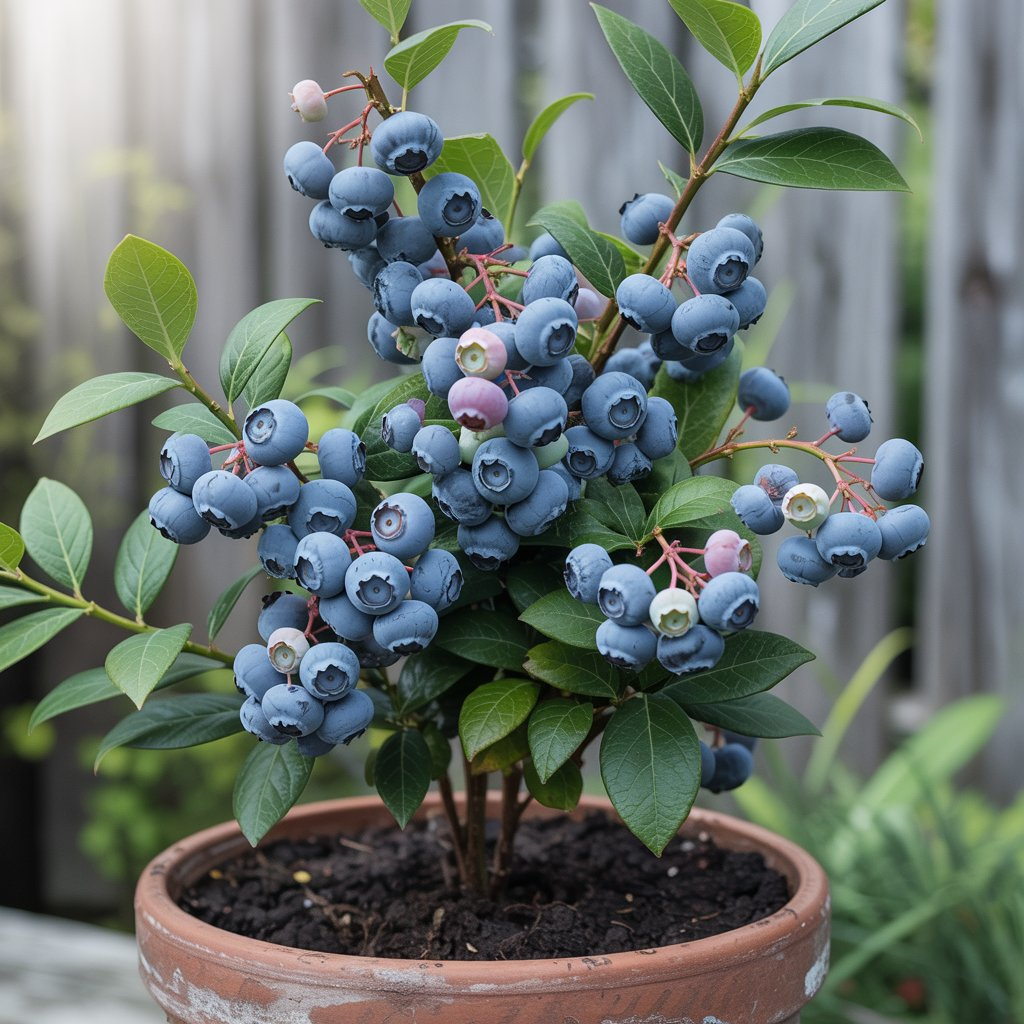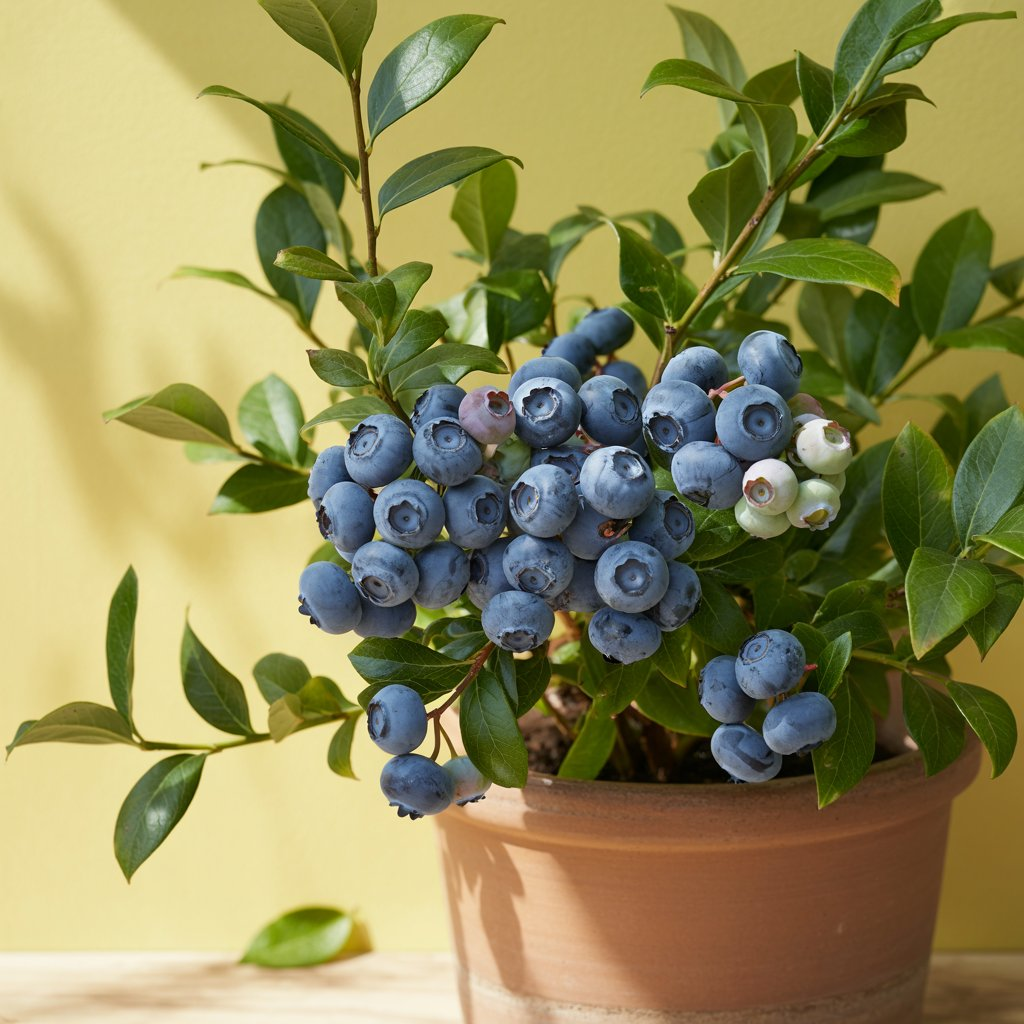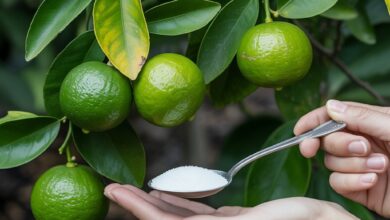How To Grow Buckets Full Of Blueberries No Matter Where You Live

Did you know that blueberries are more than just delicious? They are full of powerful antioxidants that promote good brain health and maybe even slow down memory loss. A study from 2012 found that just eating blueberries once a week can mean less cognitive decline, while a 2013 longitudinal study on mice suggested that berries helped remove toxic protein from the brain.
Best of all, you can get your berries without having to buy them at the store. With a little work you can grow your own blueberries at home! Whether you have a yard or a small balcony, you can reap the benefits of fresh, homegrown berries with these 6 easy steps.

Step 1: Decide on a Location and Prepare the Soil
Blueberries prefer sunny locations with well-drained, slightly acidic soil. Pick a planting site that gets a MINIMUM of 6 hours of sun and drains well, avoiding locations that pool or hold water. If your garden soil does not drain well, think about using raised beds or containers for each plant, especially if your working in a small space or on an apartment balcony.
In advance of planting, pull any weeds in the area, and work the soil until it is nice and loose. You will want to dig a hole at least a foot deep and 2.5 feet wide for each bush. Remove about half of the soil from the hole, and combine an equal amount of previously moistened peat moss to improve the acidity and texture. If you are planting in a raised bed, mix peat moss with a ready-made potting mix that is friendly to acids. You should not use cedar or redwood mulches, as these can poison the roots of your plants.
Step 2: Let There Be Space For Your Blueberries
The spacing for your blueberry bushes matters for promoting good airflow and minimizing disease. Individual bushes should be placed 2 to 2.5 feet apart. If you are planting in rows with multiple bushes, make rows with 8 to 10 feet between each row.
Step 3: Planting Your Blueberries
Spring or fall are the best times to plant blueberries, but depending on your climate, you may be able to plant blueberries at all times during the year.
For young nursery plants, gently lift the plant from its container and very slightly loosen the roots. Place the plant into the hole so there is a border of about 0.5 inches higher than the level of the surrounding field. Fill in the hole with your soil mixture; give it a good watering to settle in the roots.
Step 4: Mulch for Protection and Nutrition
Blueberries like lots of moisture, and have shallow roots. Mulching helps to keep moisture in the soil, suppress weeds, and from the organic matter over time want stay entertained in the soil.
Place 2-4 inches completely around the base of the plants. (Sawdust, pine bark mulches, grass clippings, and acidic compost work well). Refresh mulch every year, but don’t use cedar or redwood, because these materials might be too aggressive for blueberry roots.
Step 5: Prune for Healthier and More Productive Bushes
Pruning seems strange when you first see blossoms, but cutting back your blueberry bush when the plant is small encourages the blueberry bush to develop stronger branches and produce better fruit growth in the future.
Pruning effectively has the following steps:
Remove low-growing shoots or suckering from the base.
Cut away dead or damaged or dead wood.
Cut back short weak and ugly branches.
Aim to remove about half of the old wood; this should leave plenty of room for new growth!
By the time your bush is entering it second or third year its strength makes it ready to produce more flavorful berries.
Step 6: Fertilizing
Blueberries respond to organic fertilizers. Blood meal, cottonseed meal, and special organic berry fertilizers are favorable. Avoid using animal manure, as it too rich and can hurt the plant.
Apply fertilizer in early spring once growth begins then again in late spring again, following the fertilizer package directions for appropriate quantities.
In the End: Great Harvests For Our Bodies and Minds

Growing blueberries at home is as rewarding as it is a good investment in your well-being. The nutrient sustaining berries has been linked to better brain exhibits, for example. Some have hypothesized blueberries have the potential to slow memory loss as we grow older.
With a sunny location, acidic soil, and time, you too can soon be eating fresh blueberries from your patio or garden. What are you waiting for? Your future self will thank you.




